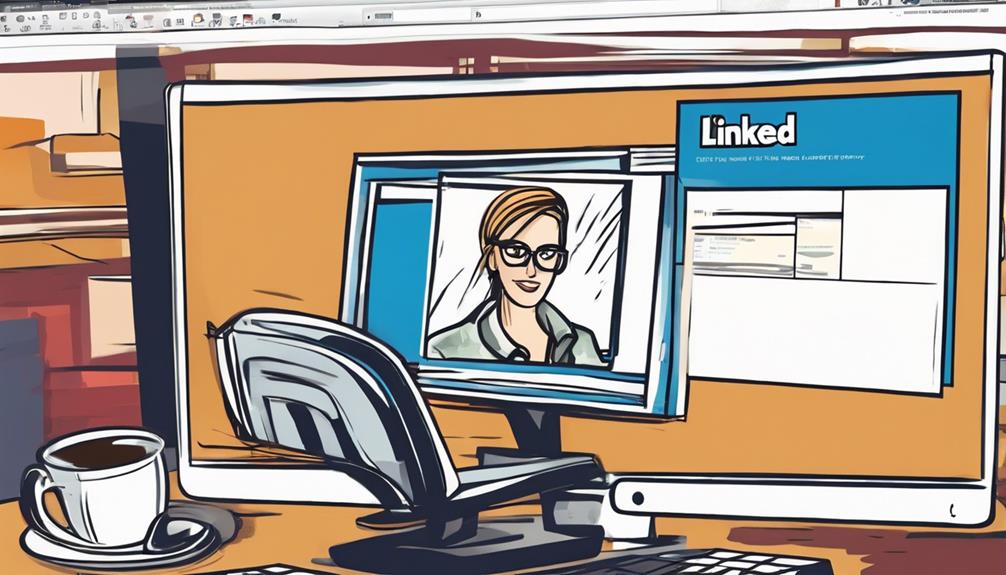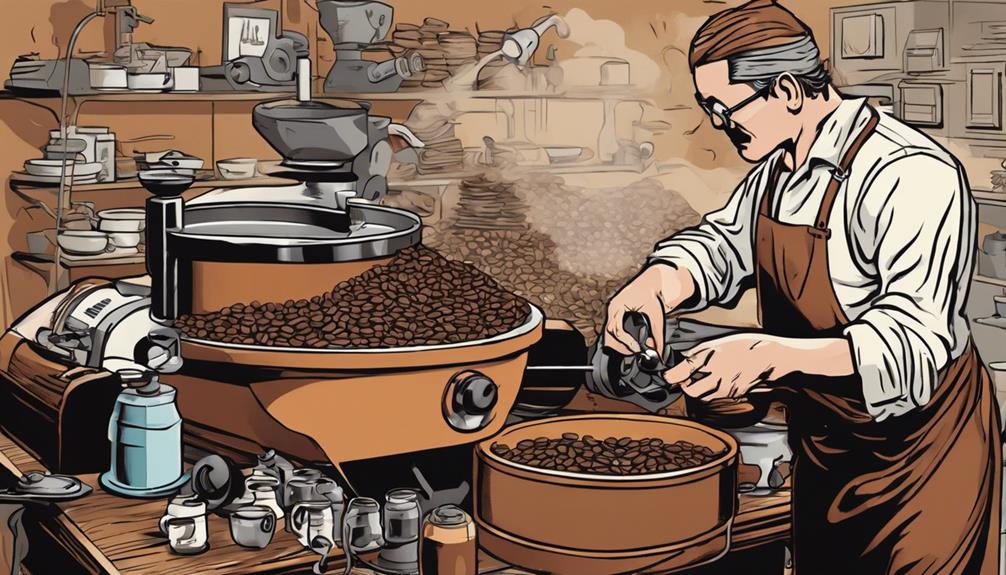To schedule a coffee chat on LinkedIn, begin by introducing yourself and explaining why you want to connect. Keep it brief, ask thoughtful questions, and share your background. Politely request 15-20 minutes of their time. Keep in mind that networking is crucial for advancing your career. Enhance your connections by interacting with industry experts and improving your networking abilities. Be willing to collaborate with different professionals and cultivate mentorship relationships. For a deeper understanding of the advantages, explore additional insights on how to maximize your networking potential.
Key Takeaways
- Craft a personalized message expressing interest in their career.
- Clearly state why you want to connect for a coffee chat.
- Ask insightful questions related to their career journey.
- Respectfully request 15-20 minutes of their time.
- Follow up with a thank you note and consider sending an appreciation card.
Coffee Chat Essentials
To guarantee a successful coffee chat, focus on key elements such as introducing yourself, actively listening, and asking insightful questions about their career journey. When setting up the meeting, keep the email brief and to the point. Share your relevant experience and respectfully request 15-20 minutes of their time for a networking opportunity.
During the coffee chat, be engaged and attentive as they share their insights and experiences. Take this opportunity to ask thoughtful questions about their job, career path, and any advice they may have for someone in your position. Remember to maintain a positive attitude throughout the conversation.
Networking isn't just about making connections; it's about building relationships. A coffee chat can be the first step towards finding a mentor who can guide you in your career journey. By actively participating in the conversation and showing genuine interest, you can leave a lasting impression that may lead to future opportunities.
Email Etiquette and Questions
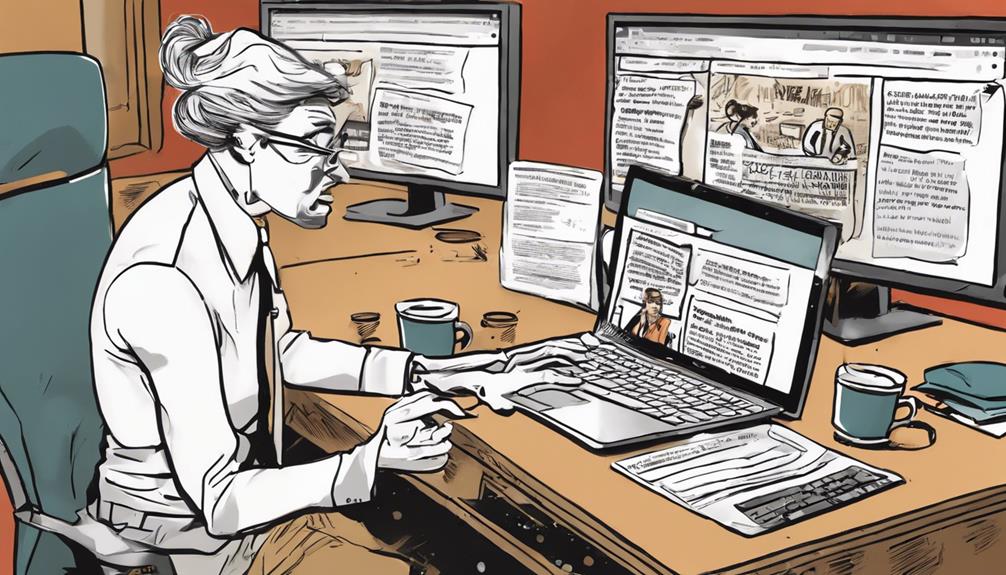
When crafting your email request for a coffee chat, clearly state the purpose and your intention for connecting with the individual. Begin by briefly explaining why you'd like to meet for a coffee chat, highlighting your interest in learning from their experiences and insights.
Here are some tips to enhance your email etiquette and questions for a successful coffee chat:
- Purpose Explanation: Provide a concise overview of why you wish to connect.
- Question Preparation: Draft 3-4 thoughtful questions to ask during the coffee chat.
- Calendar Invite: Wait for their response and send a Calendar invite if they agree to meet.
- Gratitude Expressions: End your email with a thank you note, and if they agree to mentor you, consider sending an appreciation card to show your gratitude.
Networking Significance
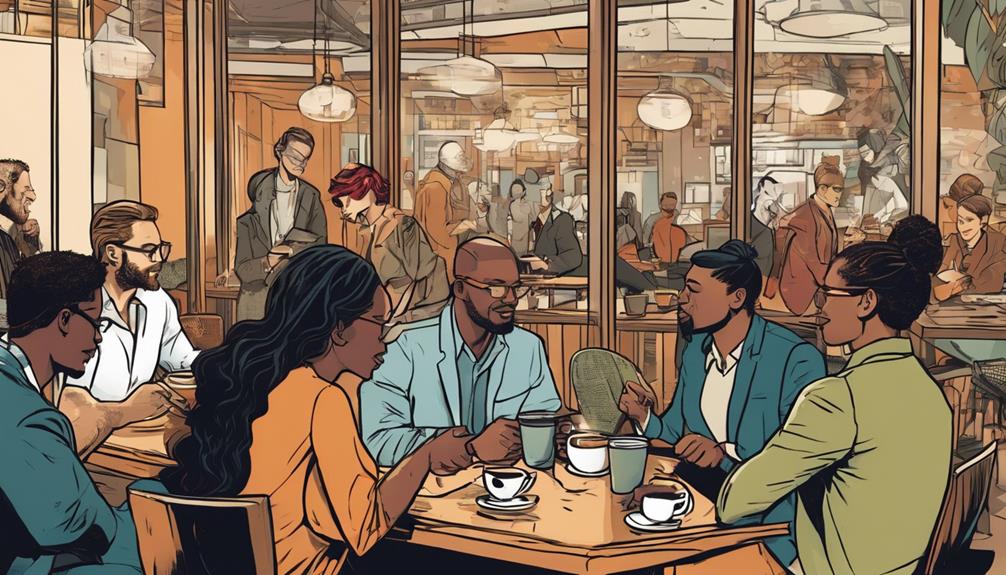
Networking is crucial to expanding your professional circle, creating opportunities for growth and exploration in your career.
Utilizing platforms like LinkedIn can aid in connecting with like-minded individuals and industry experts, bolstering your network.
Strengthening your networking skills is essential for maximizing your career prospects and achieving success in your professional endeavors.
Networking Benefits
Developing strong networking skills is essential for enhancing your career prospects and opening up new opportunities within your field. Networking benefits are plentiful, and here are some key advantages to ponder:
- Career Growth: Networking can lead to exploring new career paths within your organization and beyond, allowing for professional development and advancement.
- Enhanced Job Prospects: Strong networking skills can improve job prospects by creating valuable professional relationships that may result in new opportunities.
- Building a Strong Network: Establishing a robust network, especially as a mid-career professional, can expand your industry connections and provide avenues for career growth.
- Utilizing LinkedIn: Engaging with professionals on platforms like LinkedIn is instrumental in networking, as it enables you to connect with a diverse range of individuals and industry experts, fostering valuable relationships.
Connecting Professionally
To establish meaningful professional connections, utilizing platforms like LinkedIn can greatly enhance your networking capabilities. Networking plays an essential role in career growth, with 85% of jobs being filled through networking.
LinkedIn, with over 774 million users worldwide, is a powerful tool for expanding your professional relationships and exploring job opportunities. Building strong connections through networking not only opens doors to better job prospects but also paves the way for career advancement.
Engaging with professionals on LinkedIn can lead to discovering new career paths within your current organization or even beyond. By actively participating in networking activities on LinkedIn, you can broaden your industry connections, which in turn enhances your chances of securing desired job roles and accelerating your career growth.
Community Insights

Engaging with the community on platforms like LinkedIn can offer valuable insights and perspectives for career growth. Here are four key points to keep in mind when leveraging community insights for networking and career development:
- Say Yes: Be open to connecting with professionals from diverse backgrounds and industries. Accepting coffee chats or virtual meetings can lead to unforeseen opportunities and valuable insights.
- Expand Your Industry: Networking within your industry is essential, but don't confine yourself. Engage with professionals from different sectors to broaden your knowledge and perspective.
- Build a Strong Network for Career: Foster relationships with individuals who can provide mentorship, advice, and support. A robust network can offer guidance and unlock doors to new career paths.
- Feedback is Private: When seeking feedback or insights from your network, ensure confidentiality. This promotes trust and encourages sincere, constructive feedback that can assist you in growing professionally.
Investing time to nurture relationships and seek insights from the community can greatly impact your career growth and development.
Professional Development Guidelines
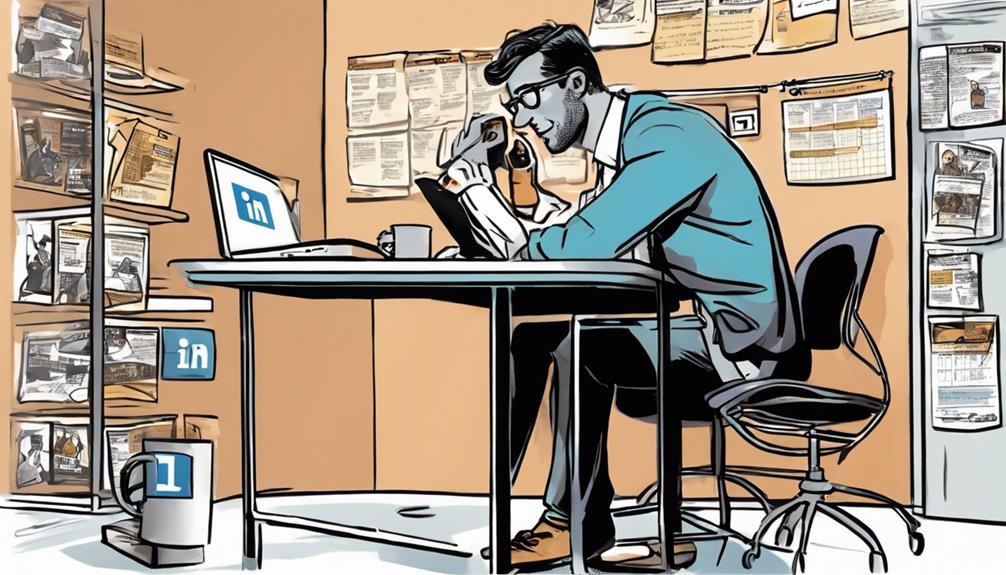
Say yes to exploring professional development guidelines that provide valuable strategies for advancing your career and enhancing your skills and knowledge. These guidelines are essential for individuals seeking career growth and looking to navigate their career journey successfully.
By following structured professional development guidelines, you can focus on networking for career advancement, honing your skills, and expanding your knowledge base. A carefully crafted message that highlights your commitment to personal and professional growth can be the first step towards implementing these guidelines.
Professional development guidelines emphasize the importance of continuous learning, goal setting, effective communication, and building a strong network for career opportunities. They offer insights on how to leverage networking opportunities, communicate effectively with peers and mentors, and seize career-enhancing chances.
Networking Strategies and Communication

Crafting personalized messages and actively engaging with your network are crucial components of effective networking strategies and communication. To enhance your networking efforts, consider the following:
- Craft Compelling Messages:
- Make sure your messages are personalized,
- Mention mutual connections,
- Have clear requests to demonstrate better contributions to the conversation.
- Respectful Follow-Ups:
- After initial contact,
- Follow up respectfully to keep the conversation going,
- Demonstrate your interest in building a relationship.
- Networking Events:
- Attend events to meet new people,
- Exchange ideas,
- Seek feedback to improve your networking skills.
- Professionalism:
- Always maintain a professional tone in your communication,
- Agree to LinkedIn's User Agreement to safeguard that feedback is never shared inappropriately.
Frequently Asked Questions
How Do I Ask for Coffee Chats on Linkedin?
To ask for coffee chats on LinkedIn, start by crafting a personalized message expressing interest. Mention shared interests and clearly state your intention for the chat. Request a 15-20 minute virtual or in-person meeting to connect professionally.
How Do I Invite for a Coffee Chat?
To invite for a coffee chat on LinkedIn, start with a friendly message mentioning shared interests. Be clear about your purpose and respectful of their time. Request a chat in a brief and personalized manner. Thank them after.
How Do You Ask Someone to Meet You for Coffee?
To ask someone to meet for coffee, simply send a friendly message introducing yourself and expressing your interest in meeting. Suggest a 15-20 minute chat, wait for a response, and prepare engaging questions for the conversation.
How Do I Ask for a Coffee Chat Template?
To ask for a coffee chat, introduce yourself briefly, express interest, and propose 3-4 questions. Keep it concise. If they agree, send a calendar invite. Post-meeting, thank them. Remember, a simple request can open doors.
Conclusion
So go ahead and take the leap! Requesting a coffee chat on LinkedIn is like planting a seed of opportunity in the garden of networking. It’s a chance to expand your professional circle and learn from others in your industry. Plus, who knows what new ideas or collaborations may come from simply making mocha coffee and having a casual conversation with a fellow professional? So don’t hesitate to reach out and schedule that coffee chat – it could be the start of something great!
Water it with genuine curiosity, sunlight of enthusiasm, and watch it bloom into meaningful connections and professional growth.
Don't be afraid to reach out, because you never know where that next cup of coffee could lead you!
